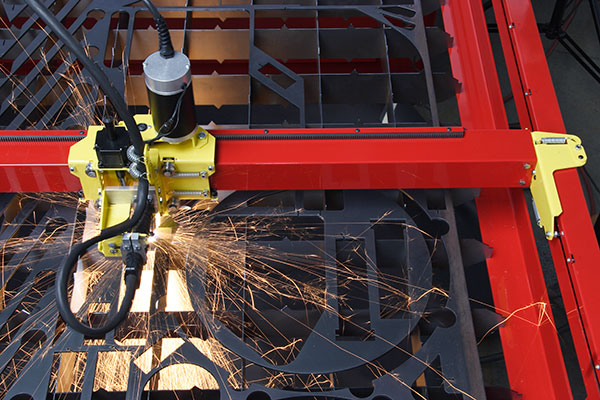Metal Fabrication - An Overview

The exact origin and time of when man began dealing with metal is unknown, but there is absolutely no question that this monumental discovery has constantly held an exceptionally important invest human society. Rudimentary metalworking emerged during the earliest civilizations with the discovery of seven primary metals: gold, silver, mercury, copper, lead, tin and iron. These metals were used for decorative pieces such as for example jewelry and religious relics, as well as for more functional uses such as for example tools, currency and weapons. Using heat and tools, early metalworkers began crafting many of the objects that we cannot imagine living without today. Over time, metal work became increasingly advanced and gained value in society.
Today metals and metal alloys (the mix of several metals) are fabricated for used in virtually every commercial industry. Metal fabrication has played pivotal roles in the advancements of technology, transportation, agriculture and construction. Generally terms, metal fabrication refers to any activity involving the construction of machines and equipment from recycleables. Fabrication businesses, or "fab shops," typically perform metal preparation, welding and assembly. The term "machine shop" identifies a small business that specializes more specifically in the cutting, shaping and assembly of machine parts. Many businesses today are categorized as both these categories and offer fabrication and machining services.

follow this link of work done by fab shops and machine shops will be the construction of structural frames, miscellaneous metals for building finishes such as stair railings, and ornamental pieces such as iron driveway gates. For large construction projects, metal fabricators generally go through a bidding process and are then awarded the work by contractors. For Visit website , there are six primary steps: engineering, cutting and burning, forming, machining, welding and assembly.
Metal fabricators will either outsource or have in-house manufacturing engineers and steel detailers for the arrangement of shop drawings and the programming of equipment. Numerical control (NC) and computer numerical control (CNC) machine tools are typically included in a fab shop's equipment for the sizing of the raw materials. After the metal is cut to size, it is then formed to the required shape using various methods and equipment such as hydraulic brake presses. The machining process requires strict attention to the engineering drawings and involves the turning, drilling and milling of metal as a way to produce the precise parts for the project. NC and CNC machine tools are also employed in this step. After all the pieces are machined, they're then welded together in accordance with instructions. Particularly with sensitive material, the welding process is really a highly specialized skill. The final step of metal fabrication, called assembly, includes finishing details such as painting and inspection.
The present day metal fabrication industry, contained in the industrial goods sector, also offers important economic influences with key players such as the USA Steel Corp. and Reliance Steel & Aluminum. Regulations concerning workplace safety and legalities have been well established, and educational metal fabrication programs exist in both large universities and small technical schools.
